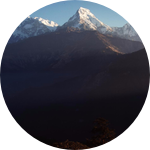About This Project
This project intends to build awareness on the application of maps using smart devices to assist in Rapid Emergency Responses (RER) that benefits state authorities and emergency service seekers. This project will plot already assessed social-ecological vulnerability on maps to make them visible. It develops and publishes educational and awareness building materials and disseminates to general public and encourages them to use maps for emergency management
Ask the Scientists
Join The DiscussionWhat is the context of this research?
Mobile devices have already become an integral part of rural life including in developing countries such as Nepal. Despite growing the number, smart devices are not been utilized into their fullest potentials. Among others, use of maps in smart devices is to inform and provide response to the clients in the emergency situations is important. In this context, this project models an application of geographic information for Rapid Emergency Response (RER) for the better welfare to the rural people’s lives. From the perspective of the science of Geographic Information Systems, this project contributes to model and test if cartography and geo-visual analytics contribute to representations of spatially embedded social networks for emergency responses
What is the significance of this project?
GIS and digital maps are emerging spatial information. The importance of Maps in Nepal, a country with complex topography and very poor accessibility of modern transportation, is immense. There were incidents that authorities failed to find the locations locations of emergencies in. Lack of knowledge and practice using maps is one of the several causes those leading to a delayed responses in emergencies. Furthermore, the incidents of missing travelers in Nepal are also of concern. In this context, it is very important to make the people, travelers and the authorities to know the application of maps using smart devices. Through the fusion of maps with social media like Google map would made it possible the Rapid Emergency Response.
What are the goals of the project?
This project will maps already assessed social-ecological units and their level of vulnerability in maps to assist stakeholders for Rapid Emergency Response and sustainable management of vulnerable social ecosystem. The geographic locationsof micro-level social ecosystems will be plotted on maps at first and vulnerability indices of system will be linked to the map to show the social-ecological vulnerability and help stakeholders identify the most to the least vulnerable units to develop response strategies. A resource material will be developed and published in both Nepali and English languages to empower general people understand and use maps in various purpose including to get emergencies services.
Budget
Vulnerability mapping of three clusters of different ecological zones has already been made. It is required to visit each of the study sites to locate each of the previously studied households in map. To conduct social-ecological vulnerability, over $6000 has already been spent for field work for 6 months. Therefore, should the funding raised beyond present budget estimation, another cluster will be added in the project. Initially, one cluster among three is proposed and the project can be done at least in $3000 (by using researcher's smart devices and some out of pocket payment)
Endorsed by
Meet the Team
Rishikesh Pandey, PhD
I am an Environment and Development Geographer (PhD) with almost two decades of work experience in tertiary education industry and in community development project management. I am well qualified social-ecological researcher, GIS analyst, policy advocate, and development professional. I got my PhD degree from the University of Adelaide, Australia and Masters by Research from the University of Oslo, Norway.
While working in university, I gain experience in high quality research in different fields that creates dialogue between social and natural sciences. My career objective is to strengthen the capacity and advancing the horizon and scope of the geographic research. I teach interdisciplinary subjects and supervise research students doing research in a variety of social fields. I have jointly authored two books, published 3 conference proceedings, and published some 18 research articles in national, regional and international journals. I have presented my works in dozens of international forums
Lab Notes
Nothing posted yet.
Additional Information
Project Progress It is too hard to map the unmappable elements using traditional tools. The unmappable elements this project intends as a pilot project are to map social perceptions on climate and environmental changes together with their command or entitlement over social-ecological resources. As a pilot study, this project locates households and settlement clusters of Lumle VDC, Kaski district, in the Middle-Mountains of Nepal in Google map. A study conducted during 2012-2016 to assess socio-ecological vulnerability has been completed, however, the research project could not conduct a mapping activity, which proposed project intends to complete. The social-ecological data have already been collected and vulnerability of micro-level social-ecosystem has already been assessed (see for Pandey & Bardsley 2015), further to that, this project is to map the vulnerability at geographic space. The non-spatial data collected from the study site will be linked to the map to see the spatial patterns of social-ecological vulnerability. The study site will be re-visited to locate individual households and clusters in map at first. The information collected previously is stored in a spread sheet with address and unique code assigned to each of the social-ecological units. These units will be linked to a Google map using ‘Google-street’ in by proposed project and various unmappable elements associated with social perceptions will be displayed in map to identify the spatial pattern of different elements: pattern of various livelihood capitals, social perceptions on climate change, experience of climate change impacts, and adaptation responses made by the people. In combination with the findings of previous research, proposed project develops a model map that can be replicate for other crowd sourcing related applications such as emergency and disasters response in the Himalaya to assist the authorities for rapid responses and the affected for timely search and rescue. Based on the knowledge acquired through this project, an educational and awareness building material will be developed to facilitate general public to apply maps as social media to cope and manage their everyday challenges. At the end of the project, the achievements will be disseminates in a sharing workshop.
Project Backers
- 3Backers
- 2%Funded
- $59Total Donations
- $19.67Average Donation

